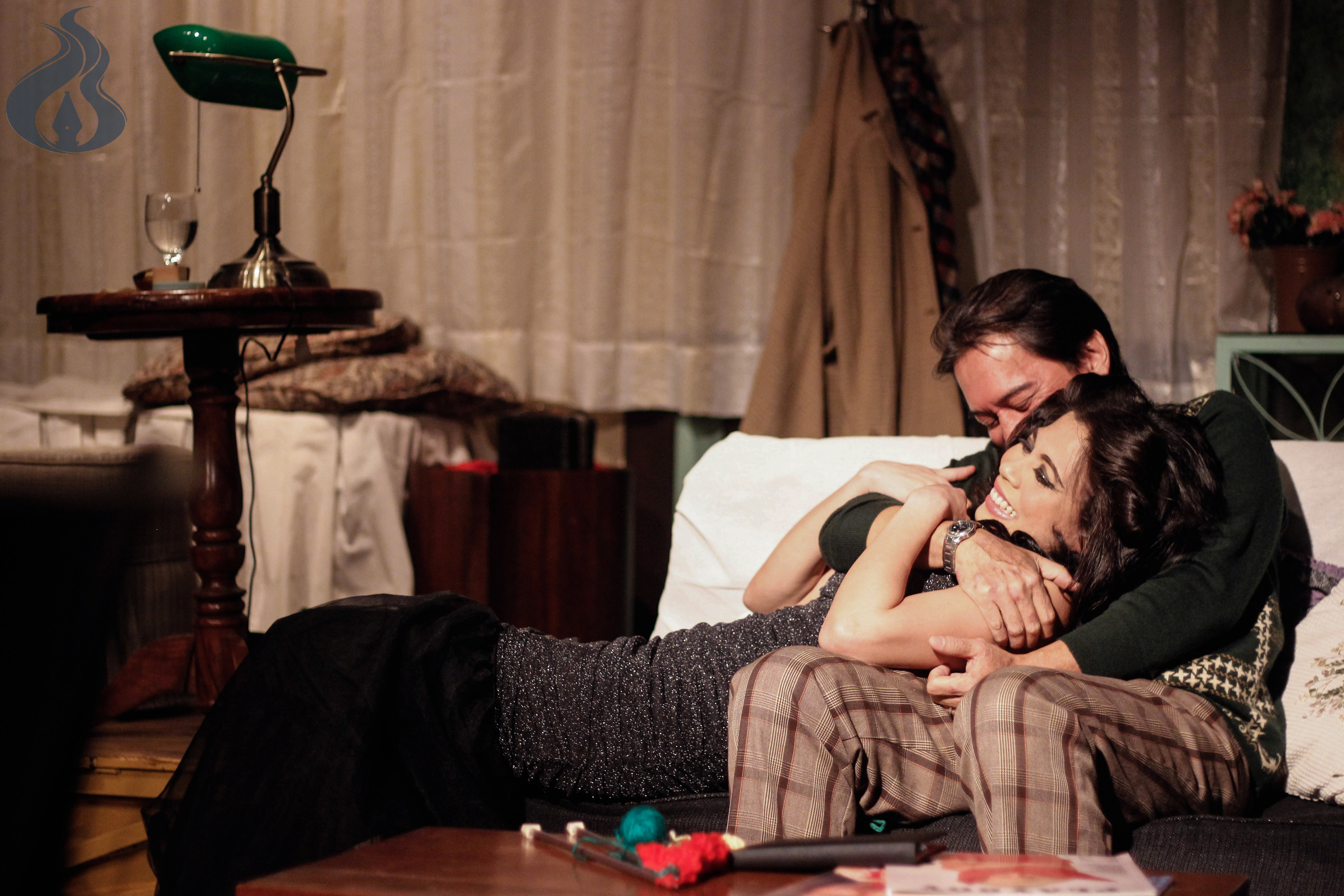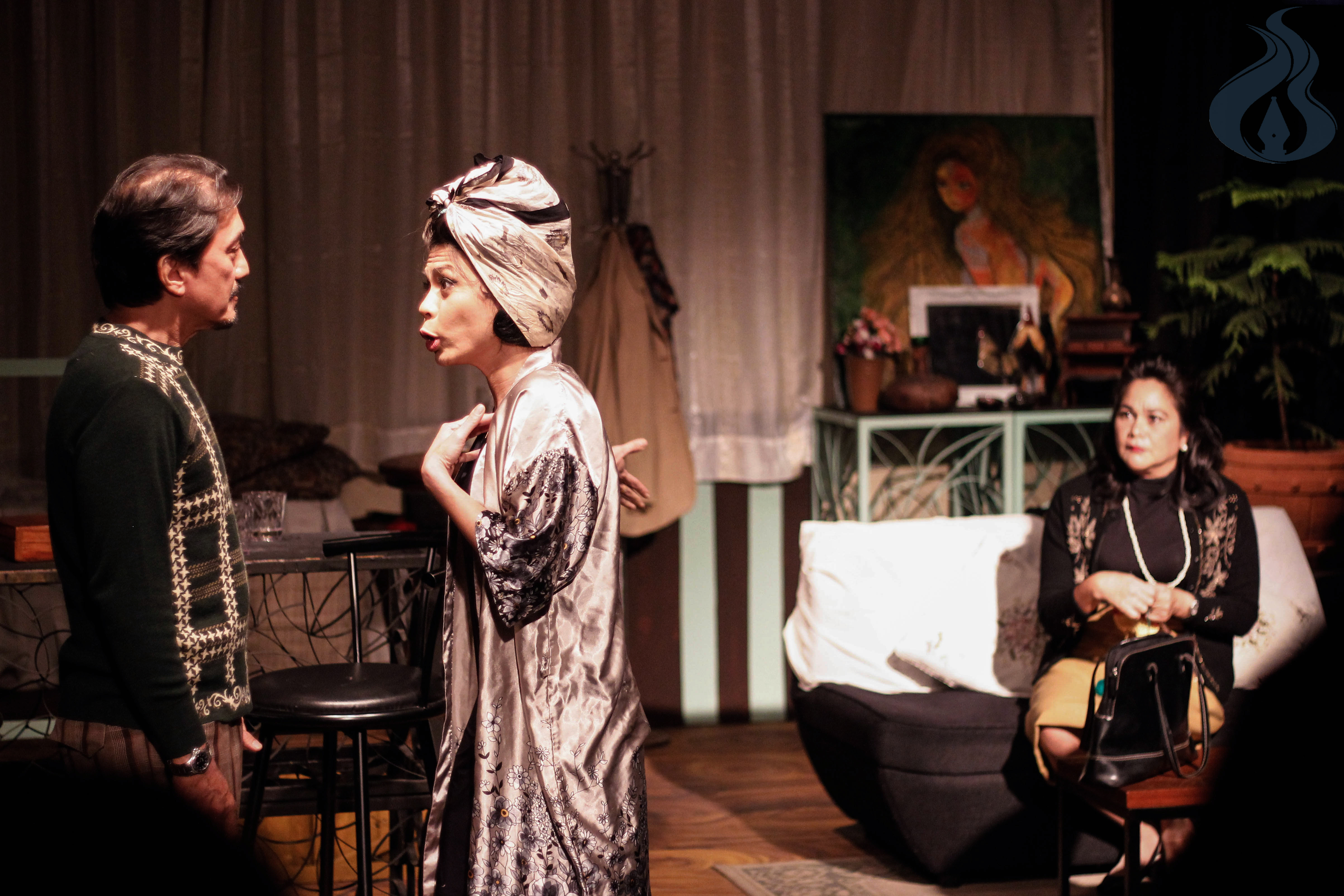
NORTHROP FRYE, in his theory of Archetypes, mentions that there is a universal experience discernable in each season of the year. Summer, he said, was the start of romance: the celebration of marriage and the consummation of love.
However, Palanca award-winning writer Rolando Tinio rebels on this idea. In the very title of his play “It’s April, What Are We Doing Here?” one can delineate a dejected rhetoric—a certain feeling of disappointed yearning and frigid impassivity. In his play, summer represents the slow degradation of romantic love.
The play was recently staged by IKARUS in a black-box type studio at DITO: Bahay Ng Sining, in Concepcion, Marikina City.
Set in Manila during the 60s, the play starts when Teresina catches her husband, Nicholas, inside the apartment of his mistress. Teresina, being a renowned psychologist, is unsurprised by Nicholas’ infidelity. The two settle their dispute as Teresina ends up being cooed by Nicholas’ charm and machismo. While they sit on the couch flirting and trying to revive the lost fervor of love from their youth, Lisa, a beautiful woman in her twenties who is also Nicholas’ mistress, sees the two as she descends from her bedroom. Lisa later then confronts the two, further complicating the story as it progresses until all of them became disenchanted from the idea of love that they held dearly leave the apartment as they find themselves underneath the mocking April afternoon sky.

Director Ricardo Abad was able to inject flair reminiscent of Ibsen in the production. The play reminds one of the latter’s A Doll House particularly because of Nicholas’ manipulation of his wife, not to mention his mistress. It adds more relatable characters, thanks to the solid and honest portrayal of the actor and actresses.
Teroy Guzman’s portrayal of Nicholas was dashing and likable, able to capture the attention of the audience as his portrayed character captures the heart of Teresina and Lisa. Judy Ick, who portrayed Teresina, does minute and subtle gestures that make her performance stand out and more believable, particularly when she confronted Lisa about the truth of her husband while wearing a pained expression punctuated with the shudders of the shoulders and faltering quivery voice. Missy Maramara, who played Lisa, acts, sings, and dances with enjoyable bravado several original songs from the play. Her final performance of the titular song was done with poise and grace hinted with a mellow sentimentality proving her adeptness in stage.
The set design was also commendable. One’s eyes may particularly be led to a siren painting where a woman with her body painted with an explosion of colors stares at its spectator. The play perhaps rests on this symbol for it depicts women as an ornament, which is evident with the way Nicholas treats the two women.
There was also a table filled with alcohol, the characters clearly the aftermath of the recent war. They are the “lost generation” leaning on vices to muffle the horrors they have seen. In this search for vice they have found one another. Even if they remain unwilling to admit it to themselves, they have developed a three-way beneficial relationship: Nicholas with the affection he gets from the two women, Teresina with her husband’s love despite his infidelity, and Lisa’s help to prove that her husband will still choose her despite her age, and Lisa with the father figure she found in Nicholas and the truth of disillusionment brought to her by Teresina.
The play speaks directly to its audience, developing a personal relationship with them as if confessing each of the character’s idiosyncrasies. Then, to further amplify the effect, they left the audience with a tragic picture that rests on their imagination, making them yearn for more. F AARON PHILIP M. DELA CRUZ



